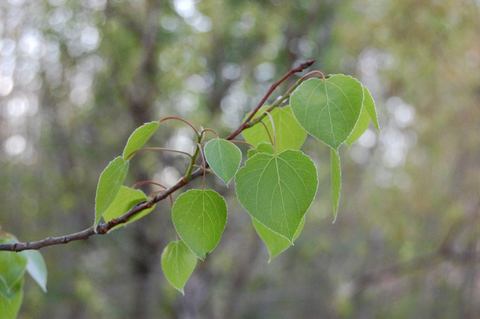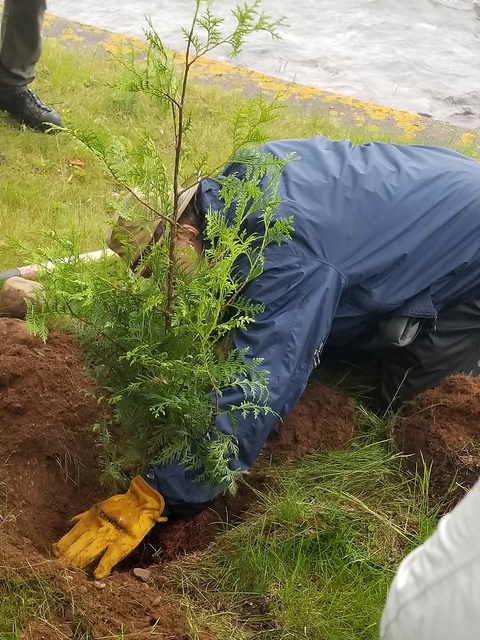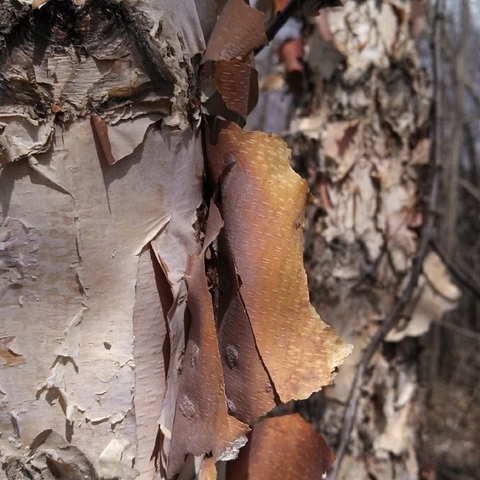Looking for a tree to plant in place of your ash? Here are seven good options
Minnesota celebrates Arbor Day on the last Friday in April. The state celebrates Arbor Month during the entire month of May. Many Minnesotans like to celebrate this season by planting a tree.
The emerald ash borer (EAB) has left behind many dead ash trees across Minnesota. All Minnesota counties have at least one variety of ash, and ash is found on 4.3 million acres in the state.
Maybe the ash tree in your yard was taken down recently because of damage from EAB. Or maybe you have hundreds of ash trees in your woodland and you’re thinking about which tree species could replace them.
Minnesota forests are home to three native ash species.
- Black ash is the most common ash tree in Minnesota, and is commonly found in forested wetlands.
- White ash is common in mesic forests throughout central and southern Minnesota.
- Green ash is more common on upland sites.
Unfortunately, all of these ash trees are susceptible to EAB.
Here are seven native tree species in parts of Minnesota that you can consider for replacing your ash. Each species has its own unique characteristics and are adapted to different sites.
American elm (the disease-resistant ones)
Best reason to plant: You’ll bring back a charismatic tree to Minnesota’s landscape.
You may be thinking didn’t all of the elms die from a disease about 50 years ago? Yes they did! But an incredible amount of research and testing have provided a number of disease-resistant elm trees. These elms have been planted widely across Minnesota.
In Minnesota’s forests and woodlands, elm and ash trees have historically been found in very similar growing conditions. Both species can tolerate wet conditions. Elms are slightly different in that they require full sun for the best growth.
Consult your tree or nursery supplier for suggestions on the right variety for the qualities that you want in an elm. The Valley Forge and Princeton varieties are most similar to the native American elm and have the classic vase-like form when mature. A number of hybrid Asian elms tend to be shorter in height compared to other varieties and grow well on tough sites.
Aspen
Best reason to plant: You want to maintain trees in an ash woodland.
All of Minnesota’s trees in the Populus genus — trees like quaking aspen, big-toothed aspen, and balsam poplar — may be good alternatives in woodlands formerly dominated with ash. Quaking aspen is the most common tree in Minnesota today, making it a good choice to replace ash. Balsam poplar may do well in wetter soils, while quaking and big-toothed aspen may do better on drier sites.
In fact, you may not need to plant aspen in a woodland if the species is close by. Aspen sprouts vigorously, a form of reproduction without using seeds. It is often one of the first species to come back to an area after a timber harvest or fire. Forest managers in northern Minnesota have been successful with planting cuttings from balsam poplar in black ash wetlands.
Northern white cedar
Best reason to plant: You want a conifer that’s characteristic of the Minnesota Northwoods.
Northern white cedar is an iconic tree that is a part of northeastern Minnesota. In its natural habitat, it can form dense stands and survives well in moist soils. If you’re looking for an ornamental variety, it is sold under the name arborvitae.
Northern white cedar trees will attract wildlife, especially white-tailed deer. Cedar is one of the most heavily browsed tree species by deer. Any choice to plant cedar will need to be immediately followed up with protecting seedlings. Ideally this would happen with fencing around trees or groups of trees.
Stands of cedar are often used as deer wintering areas. Deer may congregate in these areas in the winter to avoid heavy snow depths in other open areas, such as those with deciduous trees.
Swamp white oak
Best reason to plant: You want to plant a tree that’s predicted to do well in Minnesota’s future climate.
Also known as bicolor oak, this species can tolerate heavy and wet soil which makes it a good replacement for black ash. While native only to southeastern Minnesota, swamp white oak is known as a climate change "winner" and has been planted with success in research trials in northern Minnesota.
Swamp white oak does not grow as tall as bur oak and white oak, two similar species. The tree is also less susceptible to the oak wilt fungus compared to red oaks. The acorns on this tree will attract a number of wildlife species.
Hackberry
Best reason to plant: You want a hardy shade tree that can survive a tough environment.
Hackberry is a hardy tree that can grow in harsh urban environments. It can survive heat and drought or wind and ice, making it suitable for Minnesota’s climate. In its native habitat it can be found in floodplains and along rivers in the central and southern portions of the state.
Its corky bark sets hackberry apart from other trees in Minnesota. Birds and other wildlife will be attracted to its berry-like fruits.
Silver maple
Best reason to plant: You want a fast-growing tree that provides a lot of shade.
Silver maple is one of the fastest-growing maples. It is common in southern Minnesota and grows into the north-central part of the state, typically along rivers.
Silver maple is widely planted as a shade or ornamental tree. Its leaves are dark green on top and “silvery” on bottom, giving the tree its name.
River birch
Best reason to plant: You want a stately tree for your yard in the Twin Cities Metro or Blufflands.
Most birches across the world are found in cool climates and grow into the boreal forest. River birch is a different kind of birch, it is adapted to warm climates as far south as Florida. It can thrive in floodplains and near stream banks that are sometimes flooded.
The river birch can be a single- or multi-stemmed tree, making it a great tree to consider for the landscape around your home. Its copper-colored bark makes it stand out from other common trees.
Diversify
Not sure which species to plant? Plant several! Diversifying your yard or woodland with a variety of species gives you reassurance that your landscape can survive future insect and disease outbreaks.
Any decision about which tree to plant requires careful planning and thinking. For more options, Extension’s replacement trees for ash page can help you figure out which trees will grow well in your plant community.
Many municipalities maintain a list of suggested replacement trees for ash, so check with your local city or county’s forestry division. Consult an arborist or forester for more advice to make sure you plant the right trees in the right spot.




